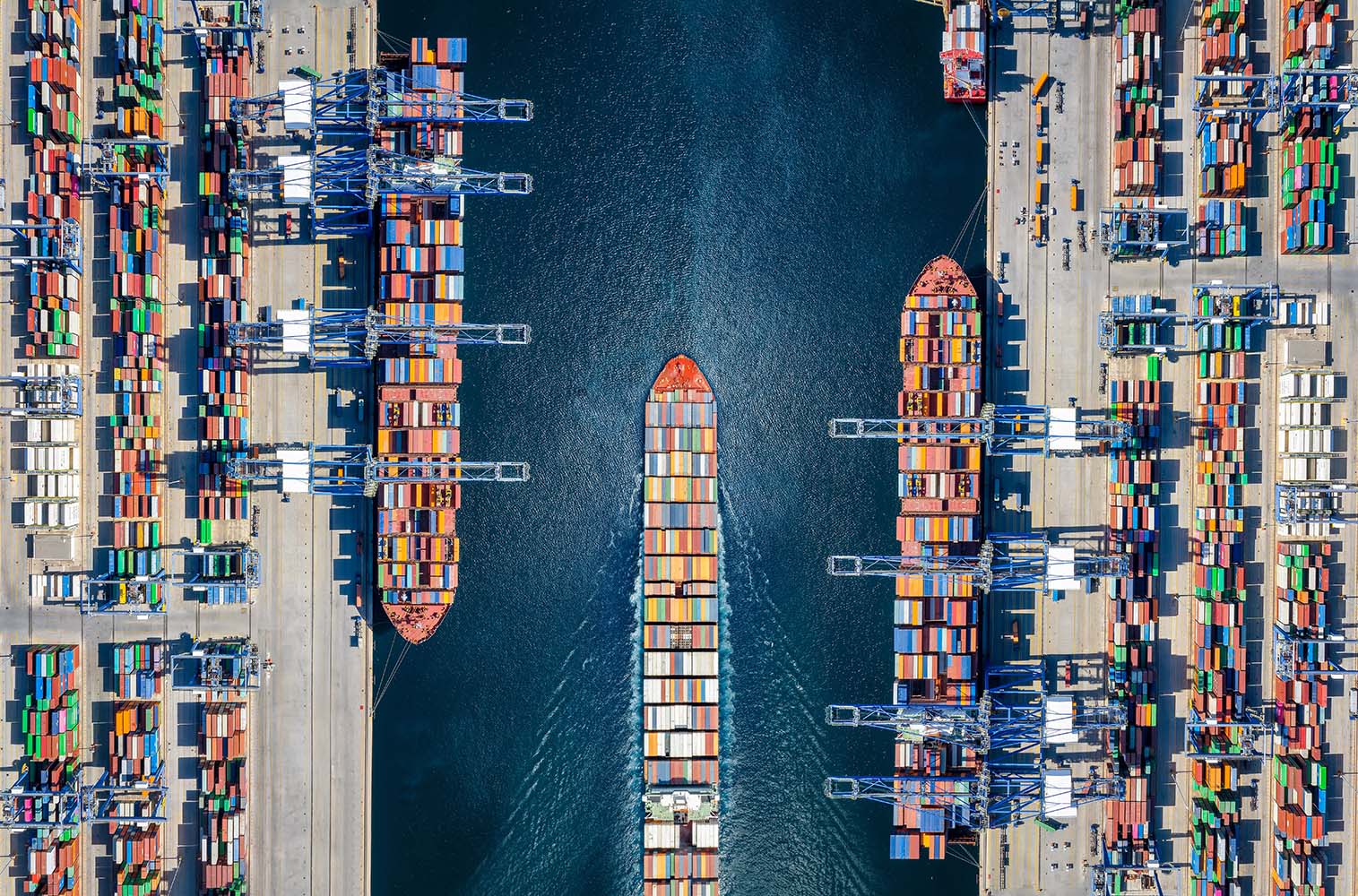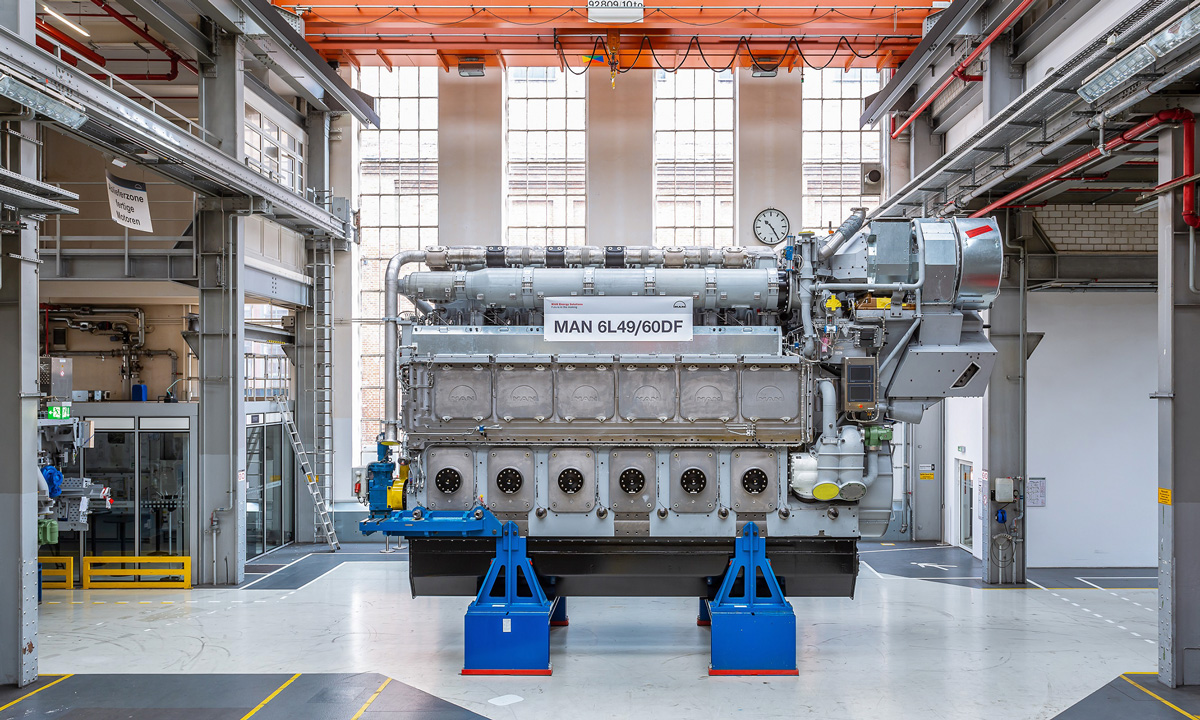FUTUR: Safety is a key factor for the use of ammonia as a fuel. Which measures and technologies are necessary to ensure the safe operation of ammonia engines on board ships?
Rauchenberger:
Ammonia is toxic, highly volatile, and has a corrosive effect. It requires a well thought-out safety concept, because the protection of the crew, the ship, and the environment must have the highest priority. The challenge already begins with storage and handling. Ammonia can be kept liquid either under pressure or at low temperatures – both of which require specially designed tanks and piping systems. Double-walled structures with integrated leak warning systems are used to prevent leaks in the event of a malfunction. And instead of copper or zinc alloys, specially coated or highly resistant materials are used as sealing materials.
A key element is permanent gas monitoring. Highly sensitive sensors are installed in engine rooms, storage tanks, and all safety-relevant areas. These sensors reliably detect even the smallest amounts of ammonia and trigger automatic safety mechanisms: The fuel supply is interrupted, exhaust air systems are activated, and endangered zones are ventilated or sealed off. This makes it possible to respond quickly and effectively in an emergency.
Pinkernell:
The fuel supply itself must also be designed for the highest level of safety. Injection systems are equipped with multiple safety valves to prevent the uncontrolled introduction of ammonia. After each operation, the system is automatically flushed – usually with an inert gas such as nitrogen – to remove any residues. Since ammonia is also highly flammable, great attention is paid to the combustion process and its control to make sure that the combustion process remains stable and controlled.
Of course, the protection of the crew is also the focus of attention. The crew must be specially trained, not only in handling the fuel, but also in emergency management. Personal protective equipment, respirators with ammonia filters, protective suits, and mobile eye wash stations are part of the basic equipment. Every refueling and every maintenance operation is carried out in accordance with established safety protocols, accompanied by emergency plans and regular training exercises on board.
The overall approach is rounded off by international safety standards. The IGF Code issued by the IMO, which regulates the safe use of gaseous or low-flashpoint fuels, provides the legal framework here. SOLAS and MARPOL guidelines are also adapted to the specific properties of ammonia in order to maintain a consistent level of safety worldwide.
FUTUR: In addition to the technical development, infrastructure is also crucial. How do you assess the future availability and economic viability of green ammonia and methanol as maritime fuels?
Rauchenberger:
There are many factors at play here. What is clear, however, is that both fuels have the potential to play a key role in the decarbonization of shipping. The difference lies primarily in the time frame and the infrastructure conditions.
Pinkernell:
Green methanol currently has the edge in terms of availability and scalability. It can be produced in two ways – either from biomass or by combining green hydrogen with CO2 from industrial processes. The big advantage is that many existing production facilities can be converted to these new sources. This means that methanol can be made available relatively quickly and in larger quantities – especially if there is political support and clear demand from the market.
Ammonia is a bit more complex, though. Its production is based on the synthesis of hydrogen and nitrogen – an established process, but one with high energy requirements, especially if the hydrogen is to be obtained from renewable sources through electrolysis. The expansion of wind and solar energy is the critical bottleneck here. Large-scale industrial plants for producing this green variant are still lacking, but there are numerous projects underway around the world that could deliver initial quantities in a few years.
Rauchenberger:
Methanol also is a globally traded commodity, it is transported in large quantities and can be handled with manageable effort using existing storage and bunkering systems. Liquid at ambient temperature and not overly toxic – this makes it a fuel that can be used without fundamentally redesigning port systems. Ammonia, on the other hand, requires more: closed systems, special sensors, and high safety standards. Although it is already being used globally, especially in the fertilizer industry, targeted investments are necessary for its use on board ships and in ports.
In terms of economic viability, both fuels are currently still more expensive than conventional fuels. But that will change. The more production capacity is created, the more economies of scale will come into play. At the same time, the political and regulatory costs of fossil fuels are rising – for example, because of the EU Emissions Trading System and CO2 taxes. This is shifting the price structure and making green alternatives increasingly competitive.
Methanol will therefore be available more quickly in the short term, while ammonia offers major advantages in the long run – such as its potential for CO2-free combustion – but this will require more time and investment. There are also differences in the areas of application: Methanol may be preferred in passenger shipping due to its lower toxicity. Ammonia, however, is predicted to have great potential in the transport of goods. The bottom line remains: Alternative fuels complement each other – and together they could have a decisive impact on the transition to emission-free shipping.
 Fraunhofer Institute for Production Systems and Design Technology
Fraunhofer Institute for Production Systems and Design Technology



